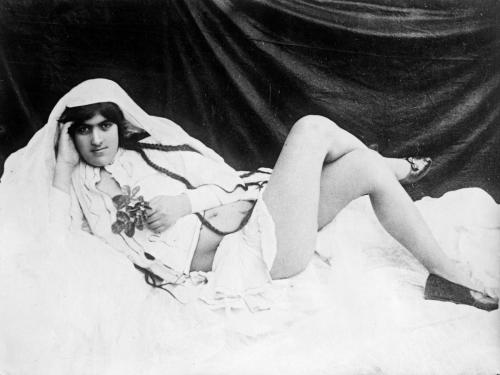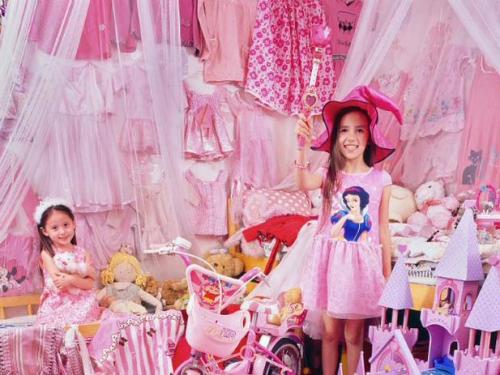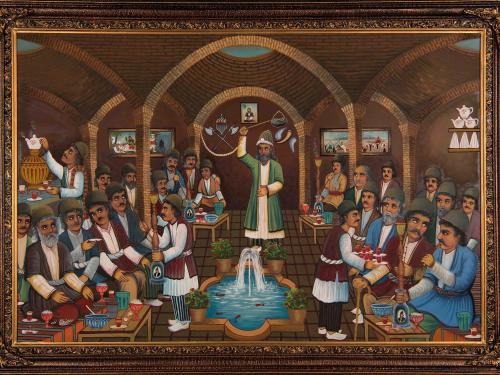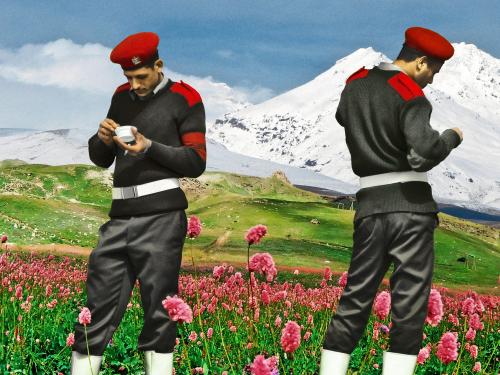
A strong jaw line doesn’t have to be an impediment to female elegance. Kabuki actor Onoe Kikugorō IV (Onoe Baikō IV, 1808-1860) had a pronounced chin, making him recognizable on many prints. He virtually only played female roles and was unequalled. The celebrated onnagata can be seen here in the role of Otani, the woman top right; she is the main character in a tragic play about blood revenge.









